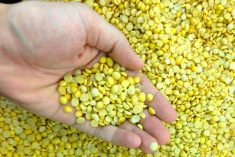MarketsFarm — Conditions are still not looking good for India’s kharif (summer) production, and in particular for pulse crops.
Excessive monsoon rains, followed by above-average post-monsoon rains, have hurt production, according to a report.
The excessive rains resulted in flooding in 13 states in India and the National Bulk Handling Corp. (NBHC) estimated Monday that overall pulse production will drop by more than 14 per cent in 2019-20.
That’s a vast improvement from NBHC’s initial estimate, which forecast a decline of almost 41.5 per cent in total pulse production.
Read Also

Huge crops in South America says analyst
Although there’s a debate over the size of the South American soybean crop, there’s little doubt that it will be an enormous one, said consultant Michael Cordonnier of Soybean and Corn Advisor in Hinsdale, Ill.
India’s monsoon rains were late in 2019, but when they did begin to fall, accumulations were 110 per cent over the long-term average, NBHC said. Added to that, the post-monsoon rains were 32 per cent above average country-wide, further exacerbating the situation. In central India alone, the post-monsoon rains were 64 per cent above average and whopping 121 per cent in the northwest region.
By crop, NBHC estimated moong (mung) production to fall 27.4 per cent compared to 2018-19 to about3 1.34 million tonnes. Urad production was forecast to be about 2.09 million tonnes, down 18.4 per cent. Tur production was expected at more than 3.21 million tonnes, for a decline of 10.5 per cent.
And it’s not only pulse crops suffering in India, as oilseed production was forecast to drop by 23.8 per cent compared to last year. Sugarcane production is expected to fall nearly 22.0 per cent. Rice was projected to drop 8.2 per cent and corn by 11.9.
— Glen Hallick reports for MarketsFarm, a Glacier FarmMedia division specializing in grain and commodity market analysis and reporting.
















